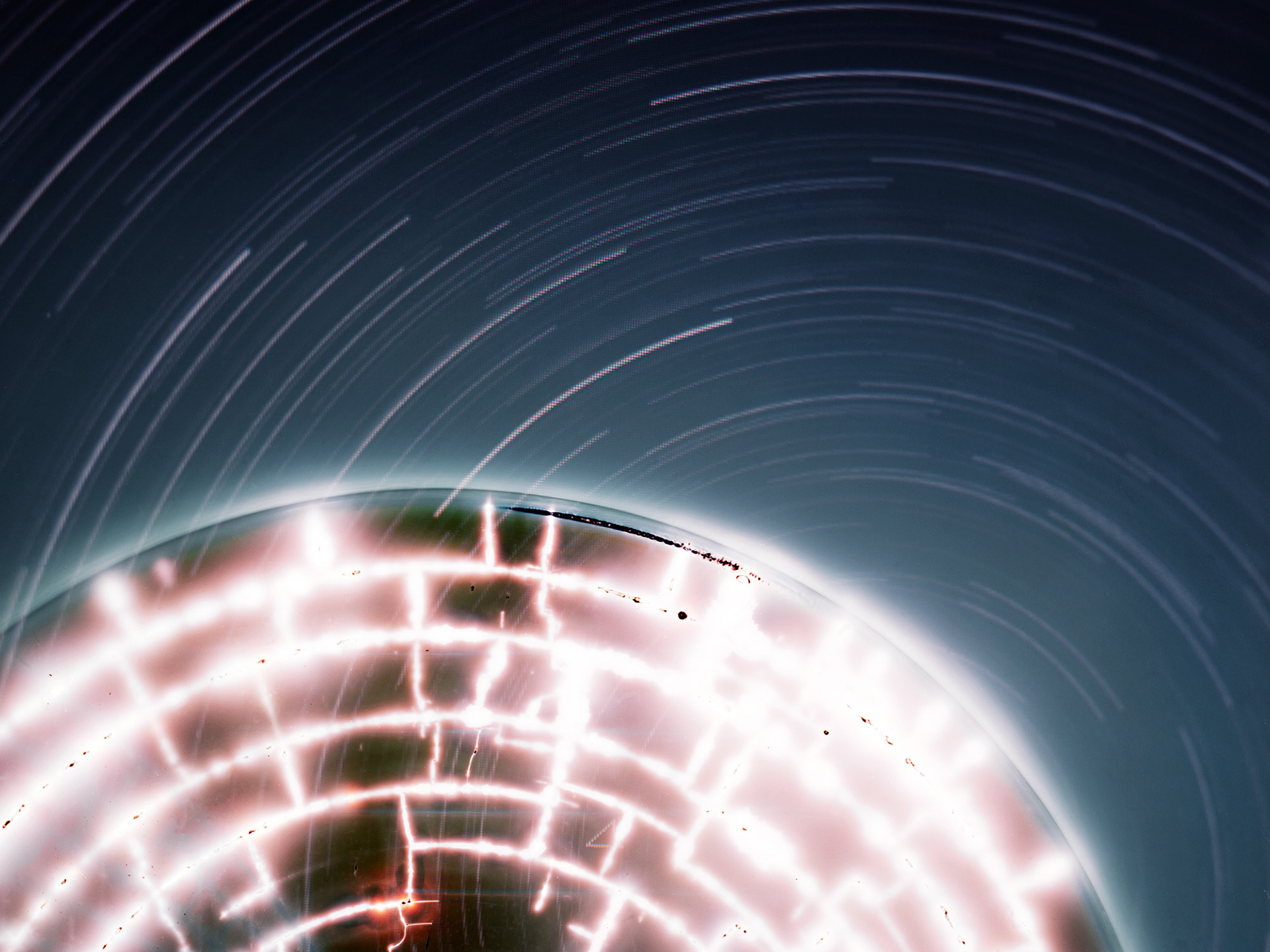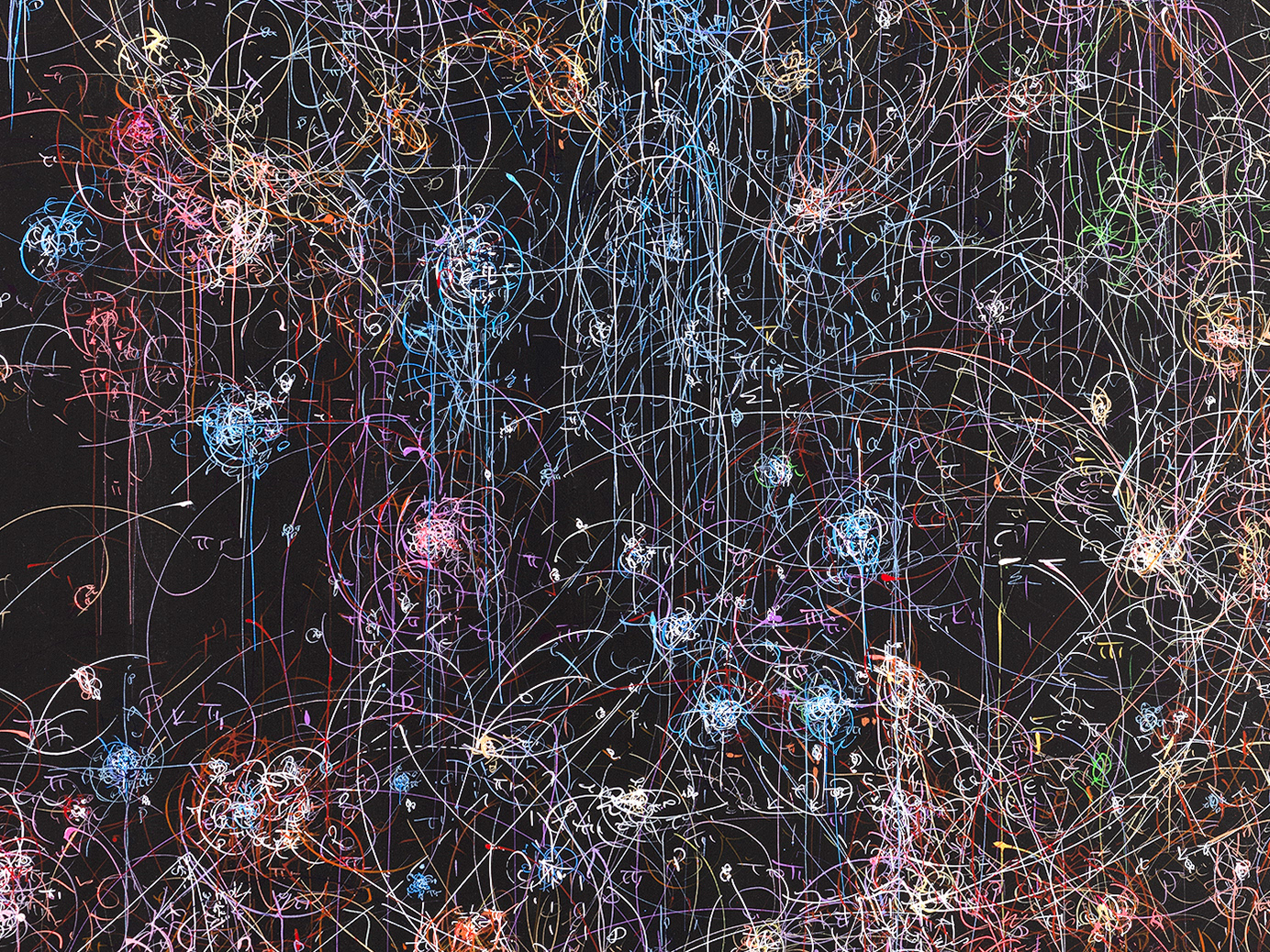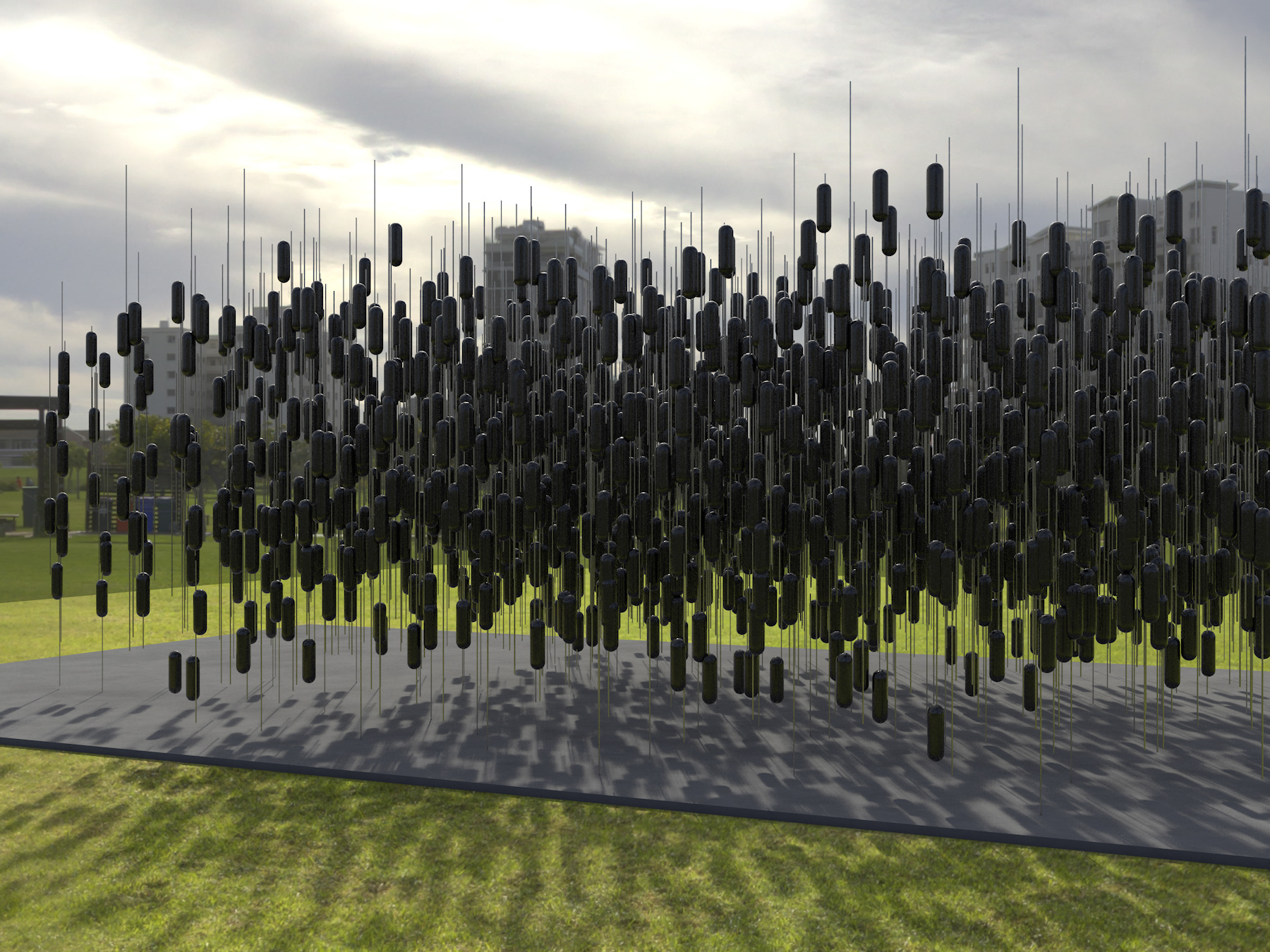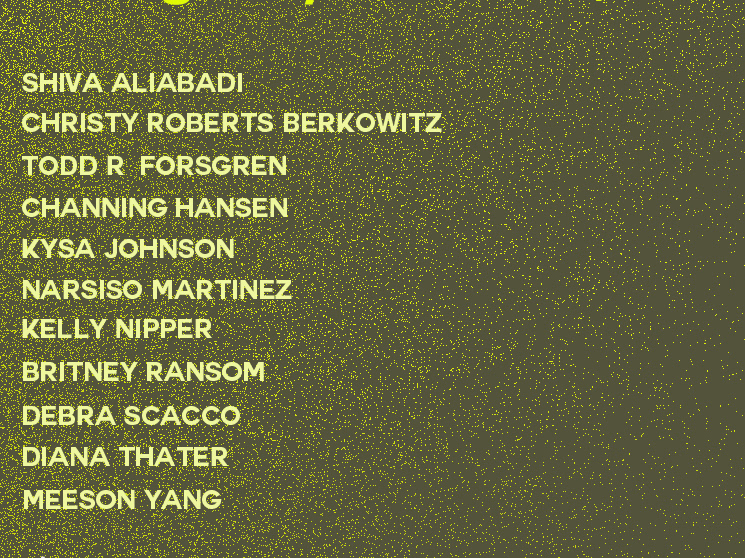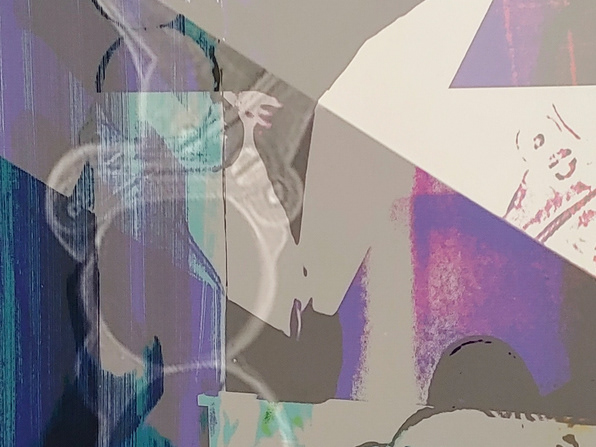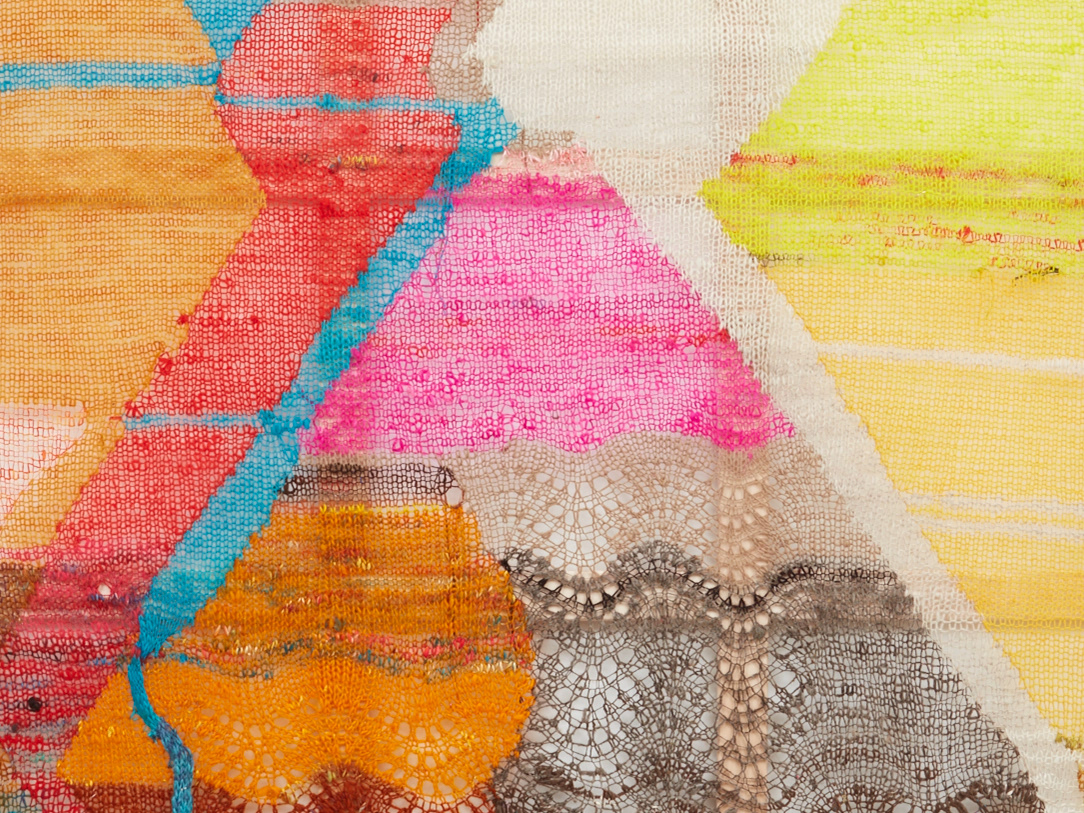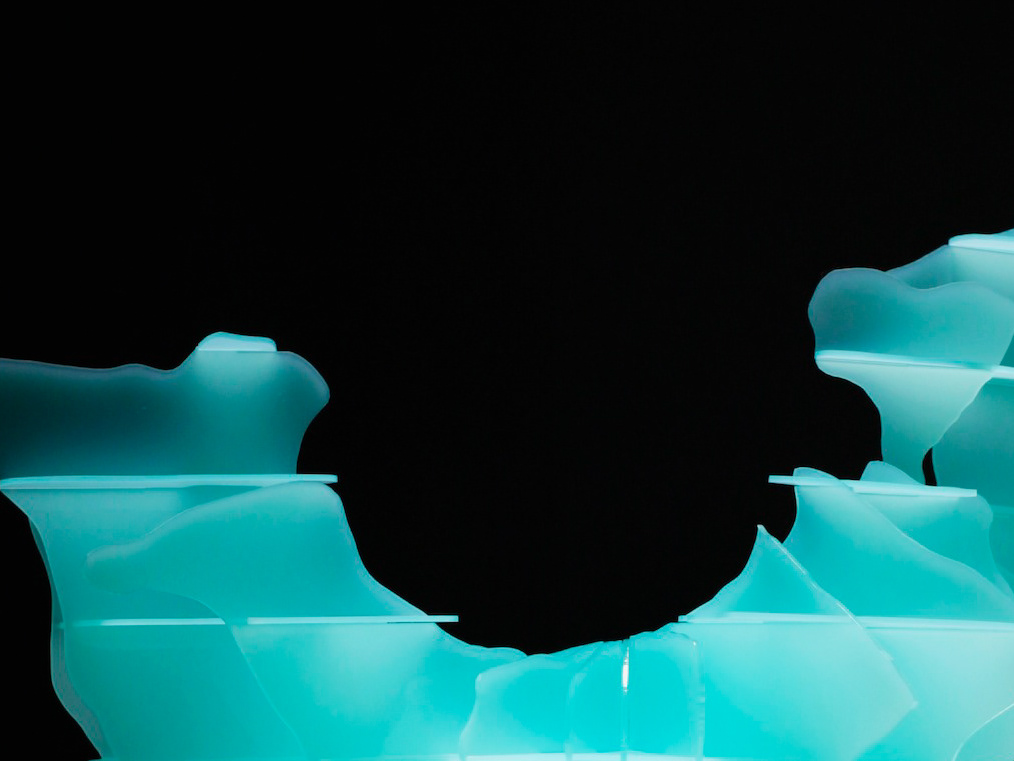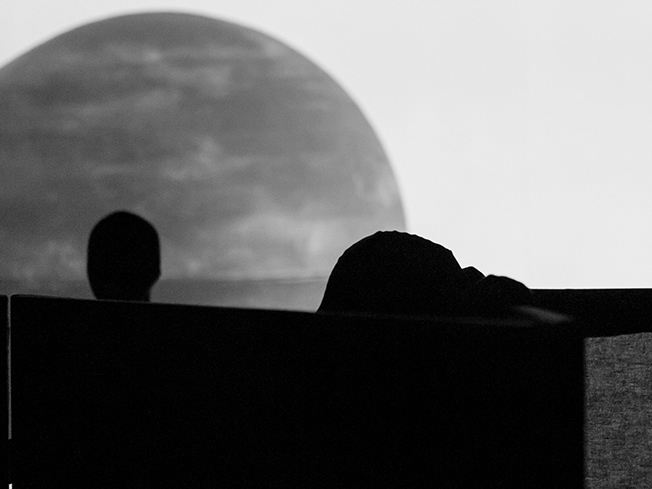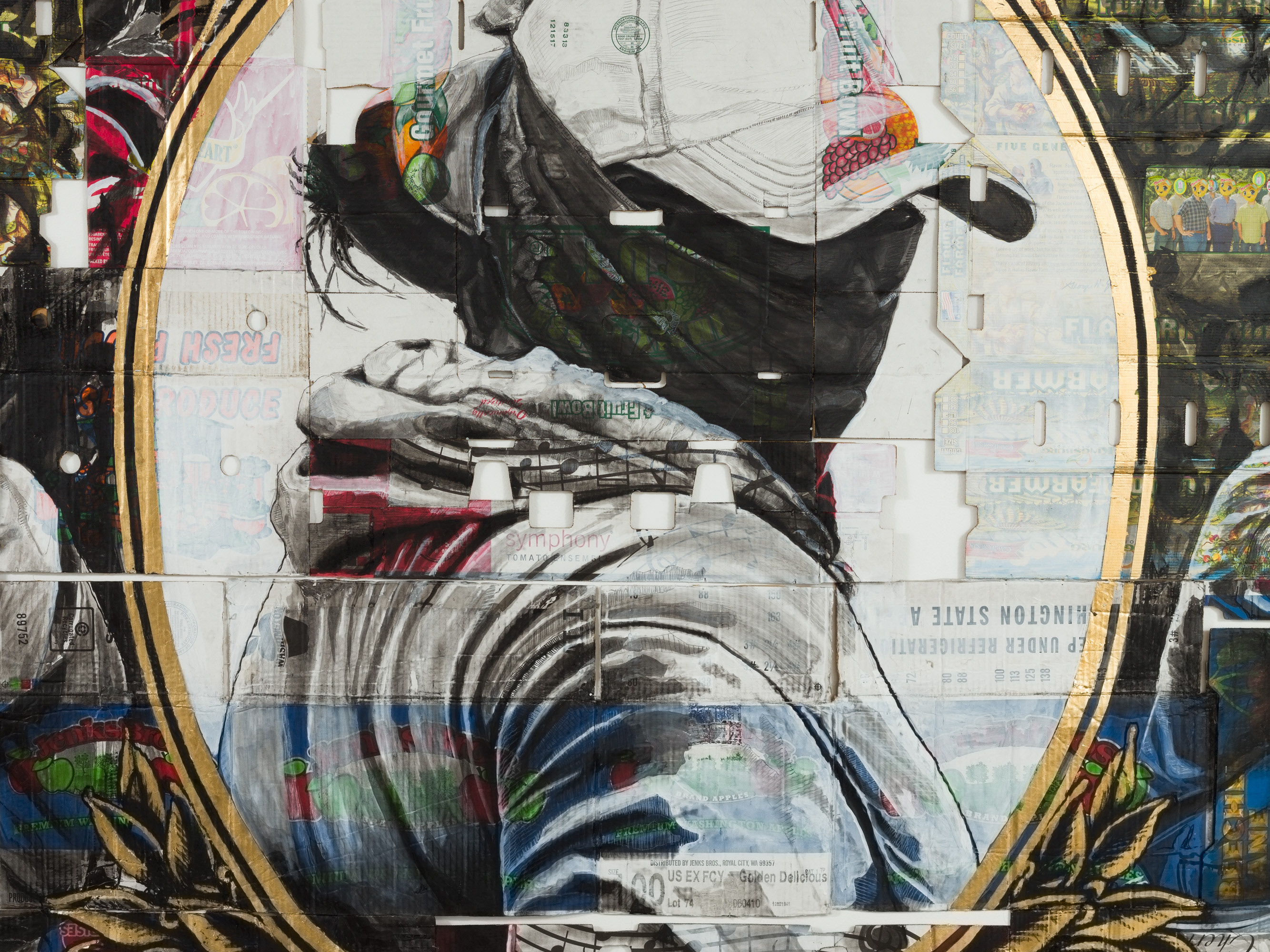Diana Thater
Statement about the Artist
“Colorvision“ (2016) is a thought provoking and engaging installation whose premise is based on a neurological test—the Stroop Effect—that investigates the speed of the brain’s ability to recognize color versus encode words. Thater states her interest in the dissonance experienced when viewers are ” shown one color but asked to read the name of its opposite,” asking, “Does reason or sensation dominate our experience of art?”
While scientifically and theoretically based, as much of Thater’s work is, “Colorvision” poses but does not answer complex questions about vision, language and memory. The key to the exhibition is the backlit banner that covers the windows. Here the garden flowers are presented as they should be; however, in each of Thater’s video depictions neither the word nor the image is a true representation of this reality. For example, in Colorvision Purple, the letters PURPLE cut from a black mask, reveal flowers with an exaggerated orange tint quivering in the drizzle. If one takes in the letters that spell out p-u-r-p-l-e first, the brain processes this as wrong because what the eye sees is orange not purple. Looking at the image first, and then reading the word, also produces a disconnect. Like the question, which came first the chicken or the egg, Thater’s work is a visual investigation of circular thinking—Is it purple or orange? Is it neither or both?—that suggests that when it comes to art, the tension between reason and sensation is unresolvable." Jody Zellen
Taken from Wikipedia,
Color Vision:
Color vision is an ability of animals to perceive differences between light composed of different wavelengths (i.e., different spectral power distributions) independently of light intensity. Color perception is a part of the larger visual system and is mediated by a complex process between neurons that begins with differential stimulation of different types of photoreceptors by light entering the eye. Those photoreceptors then emit outputs that are then propagated through many layers of neurons and then ultimately to the brain. Color vision is found in many animals and is mediated by similar underlying mechanisms with common types of biological molecules and a complex history of evolution in different animal taxa. In primates, color vision may have evolved under selective pressure for a variety of visual tasks including the foraging for nutritious young leaves, ripe fruit, and flowers, as well as detecting predator camouflage and emotional states in other primates.
Colorvision Blue, 2016
1 Flat panel monitor, 1 hard drive
Dimensions variable
Colorvision Blue, 2016
1 Flat panel monitor, 1 hard drive
Dimensions variable
Colorvision Cyan, 2016
1 Flat panel monitor, 1 hard drive
Dimensions variable
Colorvision Green, 2016
1 Flat panel monitor, 1 hard drive
Dimensions variable
Colorvision Magenta, 2016
1 Flat panel monitor, 1 hard drive
Dimensions variable
Colorvision Red, 2016
1 Flat panel monitor, 1 hard drive
Dimensions variable
